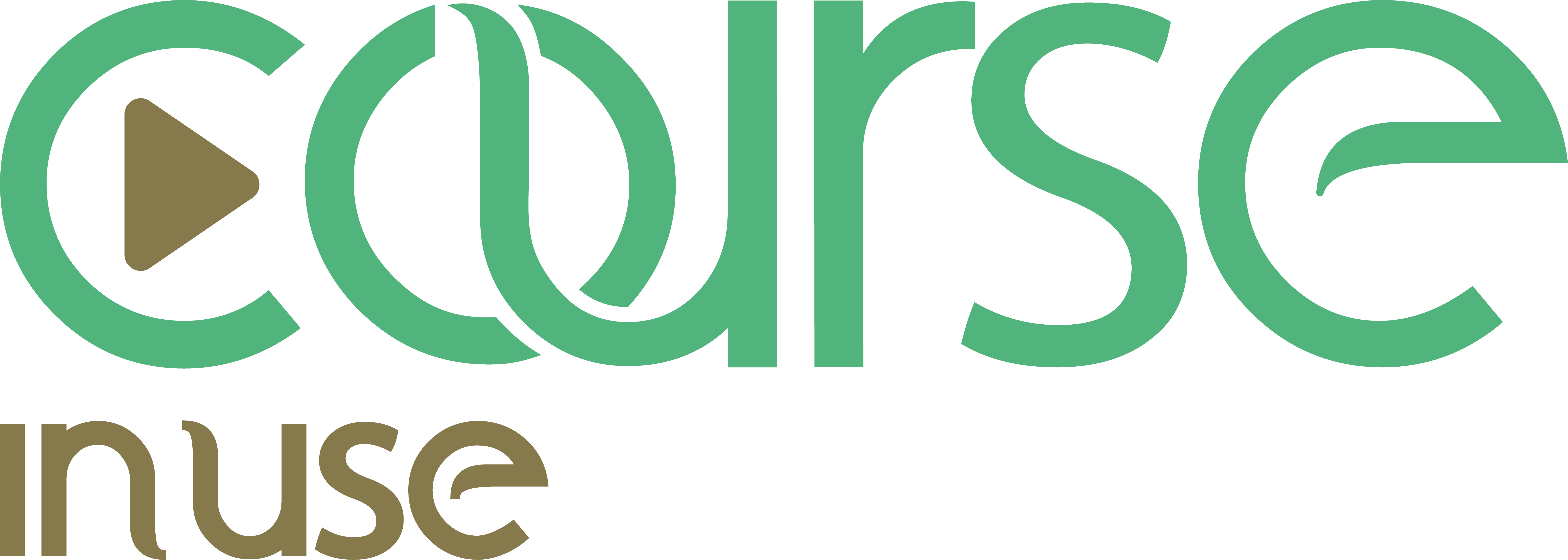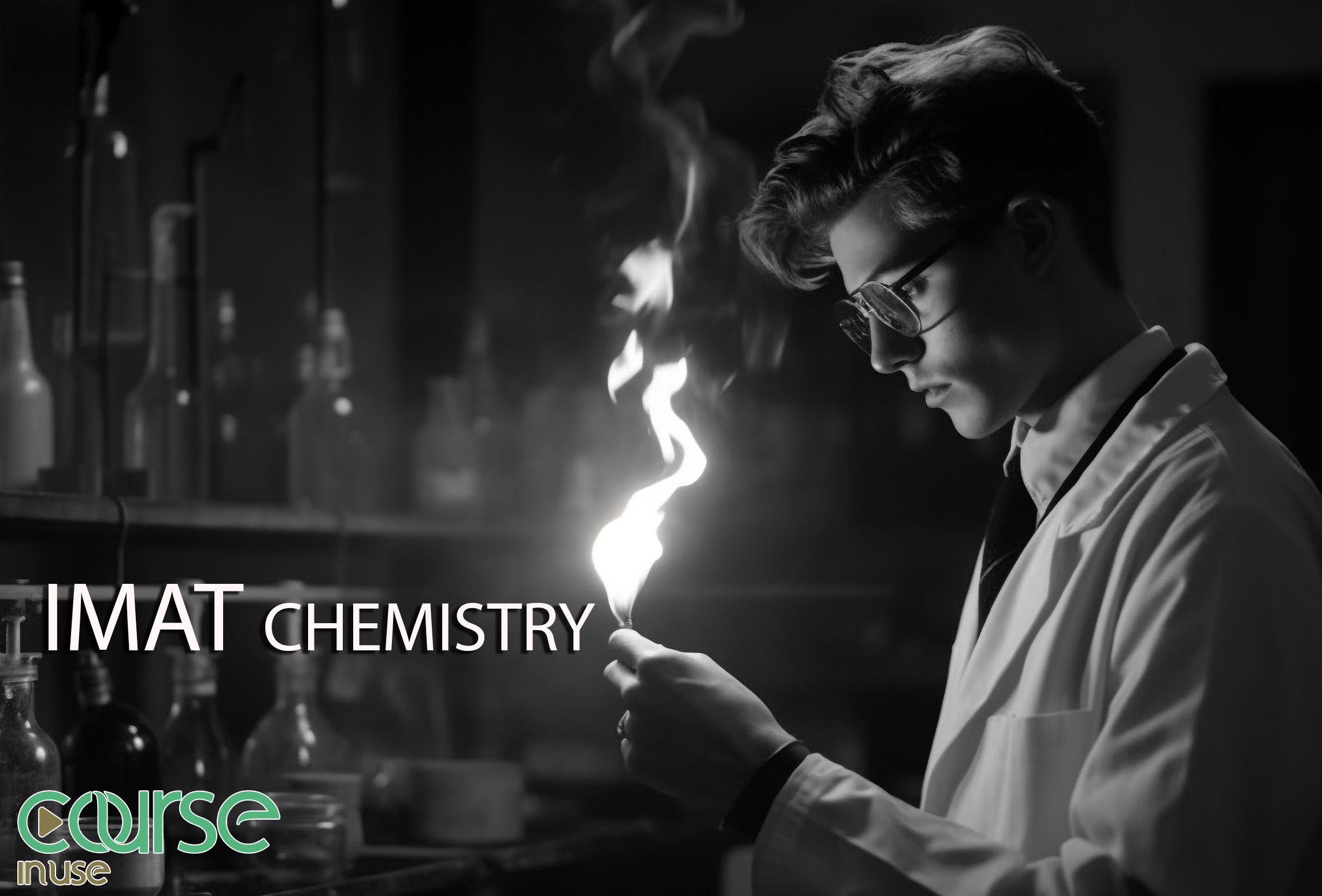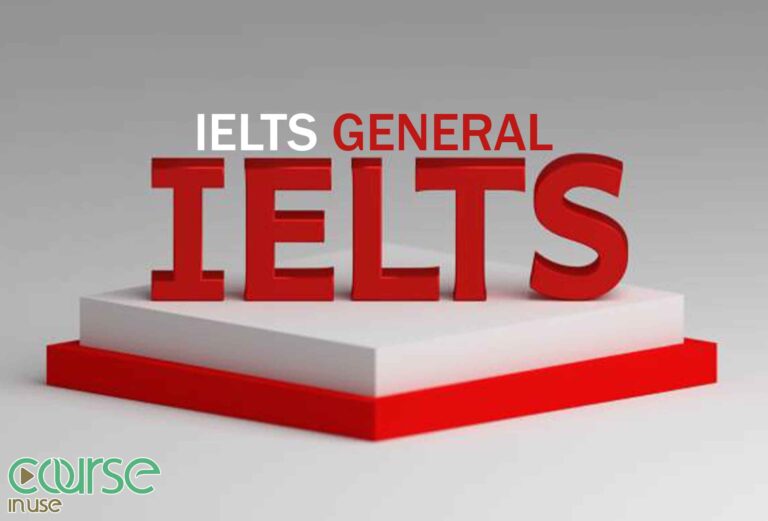The Importance of Chemistry in the IMAT Exam
The IMAT exam (International Medical Admissions Test) is a crucial examination for students aspiring to enter medical and dental schools in Italy. Chemistry is one of the core subjects tested in IMAT and holds significant importance. A deep understanding of chemistry concepts is essential for medical students as it forms the foundation for comprehending physiological processes, drug interactions, and metabolic pathways. Mastery of chemistry concepts is critical for success in the IMAT and future medical studies.
Chemistry Syllabus in the IMAT Exam
The chemistry section of the IMAT assesses candidates on a variety of topics that are fundamental to medical studies. The syllabus includes the following topics:
- Atomic Structure:
- Atomic models
- Quantum numbers and electron configuration
- Periodic trends (ionization energy, atomic radius, electron affinity, and electronegativity)
- Chemical Bonding:
- Ionic, covalent, and metallic bonds
- Molecular geometry and VSEPR theory
- Intermolecular forces (hydrogen bonding, dipole-dipole interactions, London dispersion forces)
- Stoichiometry:
- Balancing chemical equations
- The mole concept and Avogadro’s number
- Molarity, molality, and normality
- Empirical and molecular formulas
- States of Matter:
- Properties of gases, liquids, and solids
- Gas laws (Boyle’s law, Charles’s law, Avogadro’s law, ideal gas law)
- Phase changes and phase diagrams
- Chemical Thermodynamics:
- Enthalpy, entropy, and Gibbs free energy
- Endothermic and exothermic reactions
- Hess’s law
- Spontaneity of reactions
- Chemical Kinetics:
- Reaction rates and rate laws
- Activation energy and catalysts
- Factors affecting reaction rates
- Chemical Equilibrium:
- Dynamic equilibrium and equilibrium constant (Kc and Kp)
- Le Chatelier’s principle
- Calculations involving equilibrium concentrations
- Acids and Bases:
- Definitions (Arrhenius, Brønsted-Lowry, Lewis)
- pH and pOH scales
- Acid-base titrations
- Buffer solutions
- Redox Reactions and Electrochemistry:
- Oxidation numbers and balancing redox reactions
- Galvanic and electrolytic cells
- Standard electrode potentials
- Nernst equation
- Organic Chemistry:
- Functional groups and nomenclature
- Isomerism (structural, geometric, optical)
- Basic reactions of alkanes, alkenes, alkynes, alcohols, and carbonyl compounds
Budgeting chemistry questions of IMAT exam
Budgeting chemistry questions of IMAT exam 2011
| topic | Number of questions | Headline |
| Atomic Structure | 4 | Periodic process
Periodic table electron configuration Chemical properties of atoms |
| Chemical Bonding | 1 | Molecular geometry |
| Stoichiometry | 2 | reaction efficiency
Molarity |
| States of Matter | – | |
| Chemical Thermodynamics | – | |
| Chemical Kinetics | – | |
| Chemical Equilibrium | – | |
| Acids and Bases | 1 | Identify acid and base reactions |
| Redox Reactions and Electrochemistry | Oxidation numbers and balancing redox reactions | |
| Organic Chemistry | 2 | Functional groups
Isomers and Aromatic structure |
- In the 2011 IMAT exam, the chemistry section of the IMAT exam included 10 questions.
Budgeting chemistry questions of IMAT exam 2012
| topic | Number of questions | Headline |
| Atomic Structure | 5 | Periodic table
electron configuration electronegativity Properties of elements Chemical reaction |
| Chemical Bonding | 0 | – |
| Stoichiometry | 1 | Avogadro’s number |
| States of Matter | 2 | Properties of gases, liquids, and solids
Properties of metals |
| Chemical Thermodynamics | 0 | – |
| Chemical Kinetics | 0 | – |
| Chemical Equilibrium | 0 | – |
| Acids and Bases | 1 | Reaction of acids with nitrogenous compounds |
| Redox Reactions and Electrochemistry | 1 | Oxidizing agents |
| Organic Chemistry | 1 | Functional groups and nomenclature |
- In the 2012 IMAT exam, the chemistry section of the IMAT exam included 11 questions.
Budgeting chemistry questions of IMAT exam 2013
| topic | Number of questions | Headline |
| Atomic Structure | 1 | Periodic table |
| Chemical Bonding | 1 | Ionic, covalent, and metallic bonds |
| Stoichiometry | 1 | The mole concept and Avogadro’s number |
| States of Matter | 1 | Phase changes and phase diagrams |
| Chemical Thermodynamics | 0 | – |
| Chemical Kinetics | 0 | – |
| Chemical Equilibrium | 1 | Dynamic equilibrium and equilibrium constant (Kc and Kp) |
| Acids and Bases | 0 | – |
| Redox Reactions and Electrochemistry | 1 | Oxidation numbers |
| Organic Chemistry | 2 | Isomerism
Basic reactions of alkanes, alkenes, alkynes, alcohols, and carbonyl compounds |
- In the 2013 IMAT exam, the chemistry section of the IMAT exam included 8 questions.
Budgeting chemistry questions of IMAT exam 2014
| topic | Number of questions | Headline |
| Atomic Structure | 1 | electron configuration |
| Chemical Bonding | 1 | Intermolecular forces (hydrogen bonding, dipole-dipole interactions, London dispersion forces) |
| Stoichiometry | 2 | Molarity, molality, and normality
reaction efficiency |
| States of Matter | 0 | – |
| Chemical Thermodynamics | 0 | – |
| Chemical Kinetics | 1 | Activation energy and catalysts |
| Chemical Equilibrium | 0 | – |
| Acids and Bases | 2 | pH and pOH scales
Chemical properties of acids and bases |
| Redox Reactions and Electrochemistry | 1 | Oxidation numbers |
| Organic Chemistry | 2 | Basic reactions of alkanes, alkenes, alkynes, alcohols, and carbonyl compounds |
- In the 2014 IMAT exam, the chemistry section of the IMAT exam included 10 questions.
Budgeting chemistry questions of IMAT exam 2015
| topic | Number of questions | Headline |
| Atomic Structure | 2 | electron configuration
atomic number |
| Chemical Bonding | 0 | – |
| Stoichiometry | 2 | Balancing chemical equations
reaction efficiency |
| States of Matter | 1 | Solubility |
| Chemical Thermodynamics | 0 | – |
| Chemical Kinetics | 0 | – |
| Chemical Equilibrium | 0 | |
| Acids and Bases | 3 | Acidity and alkalinity of water
Properties of acids and bases Acid and base properties of a solution |
| Redox Reactions and Electrochemistry | 0 | – |
| Organic Chemistry | 4 | Formulas of organic compounds
Isomers and their characteristics Formulas of organic compounds |
- In the 2015 IMAT exam, the chemistry section of the IMAT exam included 12 questions.
Budgeting chemistry questions of IMAT exam 2016
| topic | Number of questions | Headline |
| Atomic Structure | 2 | electron configuration
The structure of isotopes |
| Chemical Bonding | 1 | Molecular geometry |
| Stoichiometry | 1 | Molarity, molality, and normality |
| States of Matter | 1 | Physical behavior of materials |
| Chemical Thermodynamics | 0 | – |
| Chemical Kinetics | 0 | – |
| Chemical Equilibrium | 1 | calculations involving equilibrium concentrations |
| Acids and Bases | 2 | Acidic and alkaline properties
Calculate PH |
| Redox Reactions and Electrochemistry | 2 | Oxidation numbers
balancing redox reactions |
| Organic Chemistry | 2 | Functional groups and nomenclature
Isomerism (structural, geometric, optical)
|
- In the 2016 IMAT exam, the chemistry section of the IMAT exam included 12 questions.
Budgeting chemistry questions of IMAT exam 2017
| topic | Number of questions | Headline |
| Atomic Structure | 3 | electron configuration
Properties of elements Structure of atoms and ions |
| Chemical Bonding | 1 | The structure of molecular compounds |
| Stoichiometry | 2 | Molarity, molality, and normality |
| States of Matter | 3 | Properties of solutions
mixtures |
| Chemical Thermodynamics | 0 | – |
| Chemical Kinetics | 0 | – |
| Chemical Equilibrium | 0 | – |
| Acids and Bases | 1 | pH and pOH scales |
| Redox Reactions and Electrochemistry | 1 | Oxidizing substances |
| Organic Chemistry | 1 | Isomerism (structural, geometric, optical)
|
- In the 2017 IMAT exam, the chemistry section of the IMAT exam included 12 questions.
Budgeting chemistry questions of IMAT exam 2018
| topic | Number of questions | Headline |
| Atomic Structure | 3 | electron configuration
Properties of elements |
| Chemical Bonding | 1 | Molecular geometry and VSEPR theory |
| Stoichiometry | 0 | |
| States of Matter | 2 | Properties of solutions
Law of gases |
| Chemical Thermodynamics | 1 | entropy |
| Chemical Kinetics | 0 | – |
| Chemical Equilibrium | 1 | Le Chatelier’s principle |
| Acids and Bases | 1 | Definitions (Arrhenius, Brønsted-Lowry, Lewis) |
| Redox Reactions and Electrochemistry | 1 | Oxidizing substances |
| Organic Chemistry | 2 | The structure of organic compounds |
- In the 2018 IMAT exam, the chemistry section of the IMAT exam included 12 questions.
Budgeting chemistry questions of IMAT exam 2019
| topic | Number of questions | Headline |
| Atomic Structure | 3 | Characteristics of the elements of the periodic table
Isotopes The structure of ions |
| Chemical Bonding | 2 | Properties of chemical bonds |
| Stoichiometry | 2 | Molarity, molality, and normality |
| States of Matter | 0 | – |
| Chemical Thermodynamics | 1 | Enthalpy |
| Chemical Kinetics | 0 | – |
| Chemical Equilibrium | 1 | Dynamic equilibrium and equilibrium constant (Kc and Kp) |
| Acids and Bases | 1 | Acid and base reactions |
| Redox Reactions and Electrochemistry | 1 | Oxidation numbers and balancing redox reactions |
| Organic Chemistry | 1 | Isomerism (structural, geometric, optical) |
- In the 2019 IMAT exam, the chemistry section of the IMAT exam included 12 questions.
Budgeting chemistry questions of IMAT exam 2020
| topic | Number of questions | Headline |
| Atomic Structure | 2 | Atomic models |
| Chemical Bonding | 2 | Intermolecular forces (hydrogen bonding, dipole-dipole interactions, London dispersion forces) |
| Stoichiometry | 1 | Molarity, molality, and normality |
| States of Matter | 1 | Properties of solutions |
| Chemical Thermodynamics | 0 | – |
| Chemical Kinetics | 0 | – |
| Chemical Equilibrium | 1 | Dynamic equilibrium and equilibrium constant (Kc and Kp) |
| Acids and Bases | 1 | pH and pOH scales |
| Redox Reactions and Electrochemistry | 2 | Oxidation numbers and balancing redox reactions |
| Organic Chemistry | 2 | Functional groups and nomenclature
Isomerism (structural, geometric, optical) |
- In the 2020 IMAT exam, the chemistry section of the IMAT exam included 12 questions.
Budgeting chemistry questions of IMAT exam 2021
| topic | Number of questions | Headline |
| Atomic Structure | 3 | Atomic models
electron configuration
|
| Chemical Bonding | 2 | Molecular geometry and VSEPR theory
Intermolecular forces hydrogen bonding |
| Stoichiometry | 2 | Molarity, molality, and normality
Empirical and molecular formulas |
| States of Matter | 1 | Properties of gases, liquids, and solids |
| Chemical Thermodynamics | 0 | – |
| Chemical Kinetics | 0 | – |
| Chemical Equilibrium | 0 | – |
| Acids and Bases | 2 | Acid-base titrations |
| Redox Reactions and Electrochemistry | 0 | – |
| Organic Chemistry | 2 | Functional groups and nomenclature
Isomerism (structural, geometric, optical) |
- In the 2021 IMAT exam, the chemistry section of the IMAT exam included 12 questions.
Budgeting chemistry questions of IMAT exam 2022
| topic | Number of questions | Headline |
| Atomic Structure | 3 | Atomic models
electron configuration Periodic trends (ionization energy) |
| Chemical Bonding | 2 | Intermolecular forces (hydrogen bonding)
Molecular geometry and VSEPR theory |
| Stoichiometry | 2 | Balancing chemical equations
Molarity, molality, and normality |
| States of Matter | 2 | Homogeneous and heterogeneous mixtures
Material properties |
| Chemical Thermodynamics | 0 | – |
| Chemical Kinetics | 0 | – |
| Chemical Equilibrium | 1 | Le Chatelier’s principle |
| Acids and Bases | 2 | Classification of acid strength of acids
pH and pOH scales |
| Redox Reactions and Electrochemistry | 1 | Oxidizing agents |
| Organic Chemistry | 2 | Isomerism (structural, geometric, optical)
Basic reactions of alkanes, alkenes, alkynes, alcohols, and carbonyl compounds |
- In the 2022 IMAT exam, the chemistry section of the IMAT exam included 15 questions.
Budgeting chemistry questions of IMAT exam 2023
| topic | Number of questions | Headline |
| Atomic Structure | 3 | electron configuration
Identification of elements Periodic trends (ionization energy( |
| Chemical Bonding | 1 | dipole-dipole interactions |
| Stoichiometry | 1 | reaction efficiency |
| States of Matter | 3 | ideal gas law
Properties of gases, liquids, and solids |
| Chemical Thermodynamics | 0 | – |
| Chemical Kinetics | 0 | – |
| Chemical Equilibrium | 1 | Dynamic equilibrium and equilibrium constant (Kc and Kp) |
| Acids and Bases | 3 | pH scales
Properties of acids |
| Redox Reactions and Electrochemistry | 1 | Reducing and oxidizing agents |
| Organic Chemistry | 2 | Isomerism (structural, geometric, optical)
Functional groups and nomenclature |
- In the 2023 IMAT exam, the chemistry section of the IMAT exam included 15 questions.
Budgeting chemistry questions of IMAT exam 2024
| topic | Number of questions | Headline |
| Atomic Structure | 0 | – |
| Chemical Bonding | 0 | – |
| Stoichiometry | 5 | Molarity, molality, and normality
reaction efficiency Calculate molecular mass |
| States of Matter | 3 | Gas laws
Properties of gases |
| Chemical Thermodynamics | 0 | – |
| Chemical Kinetics | 0 | – |
| Chemical Equilibrium | 0 | |
| Acids and Bases | 4 | Definitions (Arrhenius, Brønsted-Lowry, Lewis)
Ph scales Acid and base reactions |
| Redox Reactions and Electrochemistry | 1 | Oxidizing and reducing agents |
| Organic Chemistry | 2 | The structure of organic compounds |
- In the 2024 IMAT exam, the chemistry section of the IMAT exam included 15 questions.
Types of Chemistry Questions
Chemistry questions in the IMAT are typically multiple-choice (MCQ) and assess both theoretical knowledge and practical application. Questions may include:
- Analyzing chemical equations and predicting products
- Interpreting graphical and tabular data
- Solving quantitative problems related to moles and concentrations
- Applying thermodynamic and kinetic principles to reactions
Strategies for Success in Chemistry
- Deep Understanding of Concepts: Rather than memorizing facts, deeply understand the fundamental concepts of chemistry. This will help in answering analytical and application-based questions.
- Regular Practice: Regularly practice past IMAT questions and sample problems to become familiar with the exam format and question types.
- Effective Time Management: Practice completing the chemistry section within the allotted time to improve speed and accuracy.
- Use of Reliable Resources: Utilize credible and specialized study materials and books tailored for the IMAT to ensure comprehensive coverage of the syllabus.
- Focus on Weak Areas: Identify and spend extra time on topics where you are weak to ensure a balanced understanding of all subjects.
Best Resources for IMAT Chemistry Preparation
-
Cambridge International AS and A Level Chemistry Coursebook:
- This book, developed through extensive research, classroom observations, teacher interviews, and collaboration with the research community, meets all the educational needs of students in chemistry. The content has been revised and updated to align with the Cambridge International AS and A Level chemistry curriculum. It covers all the knowledge and skills required for international exams and is specially designed for international students to understand clearly. Self-assessment questions and exam-style questions help students track their progress and fully prepare for exams.
-
Cambridge IB Chemistry:
- This comprehensive textbook covers all the syllabus topics of chemistry and is extremely useful for success in international exams like IMAT and BMAT. The book includes exam questions and detailed answers, providing students with an opportunity to assess their knowledge. Written in collaboration with IB teachers, examiners, and Cambridge instructors, this guide gives students direct access to important materials and teaching tips.
-
CGP A-Level Chemistry Revision Guide:
- This book is one of the best resources for revising and practicing chemistry topics. It is suitable for candidates aiming for international exams for undergraduate admission. The book features simple explanations, useful examples, and full-color diagrams. Practice questions and exam-style questions (with detailed answers) are included in each topic, providing a comprehensive guide to chemistry test-taking skills. The content covers the first two years of high school chemistry with detailed explanations and examples to help students, even those with weak backgrounds in chemistry, to understand the material thoroughly.
IMAT Chemistry Preparation Courses
Intensive IMAT Course
The IMAT preparation course at the Course In Use Center is one of the most specialized centers offering the highest international standards of educational classes with the best experienced IMAT exam instructors. The IMAT preparation course consists of 470 hours for the complete course and 200 hours for the intensive course in English, covering all IMAT exam topics in biology, chemistry, mathematics, physics, logical reasoning, and general knowledge, as well as IELTS preparation. Additionally, a final review and test-taking strategies course is held at the end of the program. Alongside this course, the team also handles registration, visa, and admission procedures, and helps in obtaining scholarships from Italy.
IMAT Mock Tests
Comprehensive Online IMAT Course
The IMAT is the entrance exam for medical and dental programs taught in English in Italy. Candidates need to achieve the required score for their desired university in the IMAT exam. The IMAT exam covers biology, chemistry, mathematics, physics, logical reasoning, and general knowledge, totaling 60 questions and 90 marks. To better prepare candidates for the IMAT Italy exam, the Course In Use offers IMAT preparation courses, with many students participating annually. The IMAT preparation courses include comprehensive and intensive courses. Candidates with more than 6 months to prepare typically enroll in the comprehensive courses, while those with a shorter preparation time who plan to take the exam in September enroll in the intensive course.




